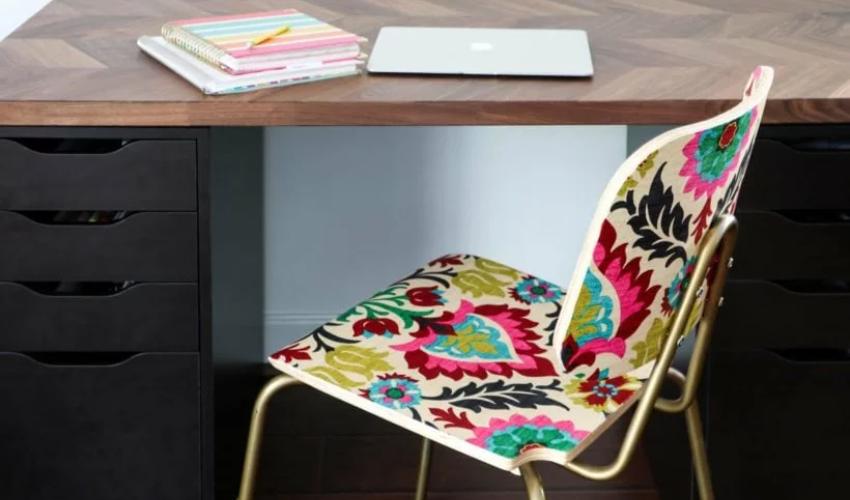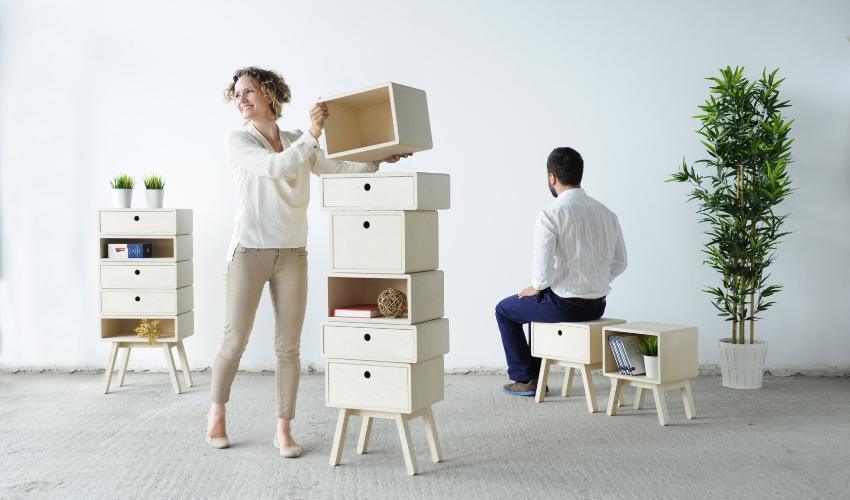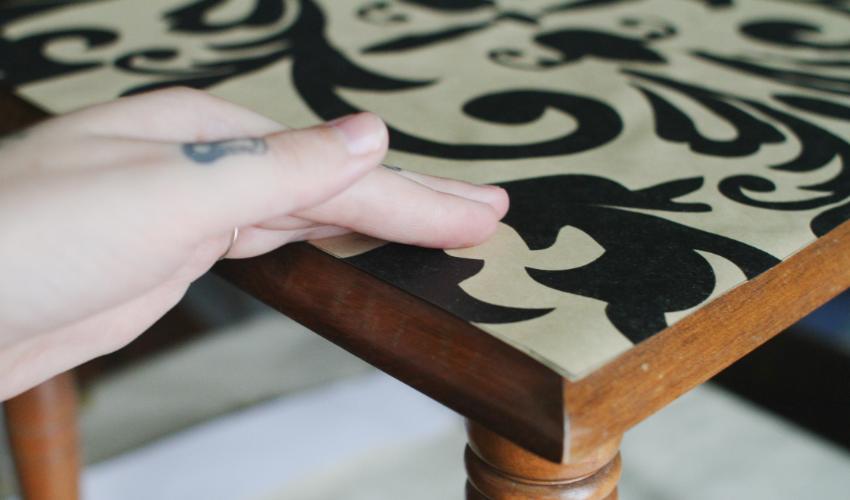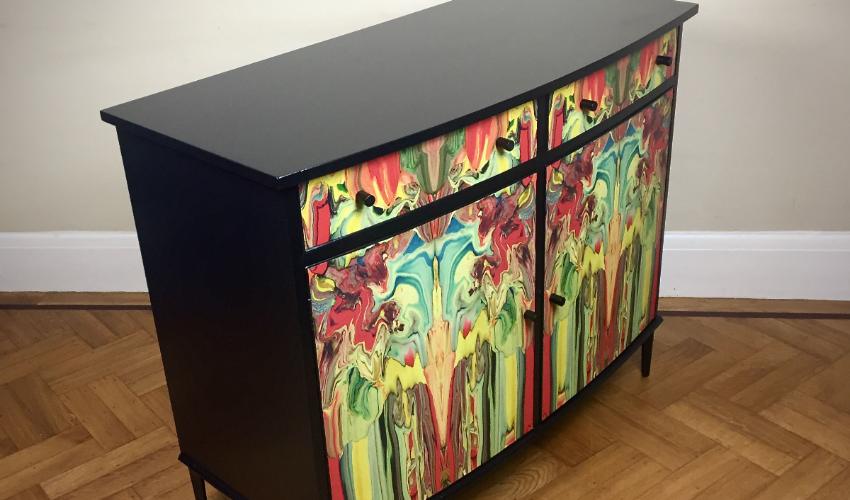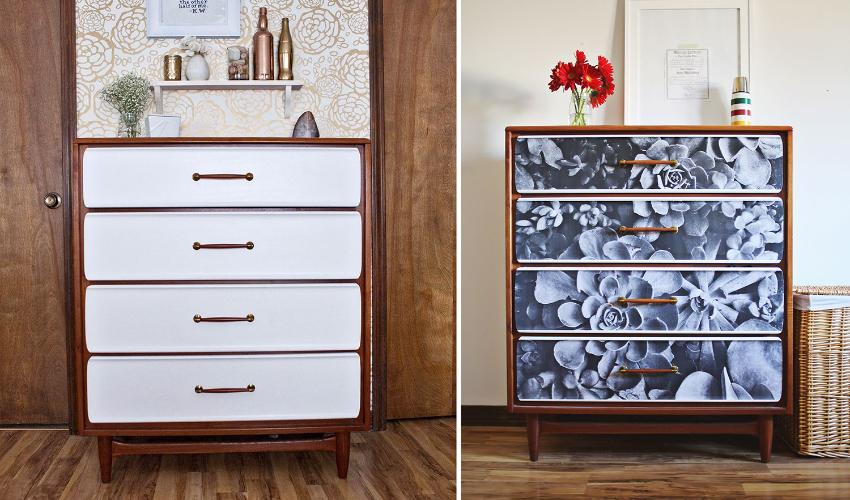Decoupage, a creative and ingenious art form, offers a fantastic way to transform your wood furniture. It’s a technique that allows you to adorn furniture surfaces with modern or antique paper designs, transforming your pieces into unique works of art. If you’re looking to infuse personality and style into your living spaces by decoupaging, this article by Dubai Curtain is your go-to guide on how to decoupage wood furniture. We’ll walk you through all the essential steps, share tips and tricks, and explore the endless possibilities that Decoupage offers for revamping your wooden treasures.
Decoupage on Wood Furniture | A Step-By-Step Guide
Decoupaging can be used to create various artistic designs and patterns on wooden furniture, turning plain surfaces into works of art. It’s a versatile and creative technique that allows for personalization and artistic expression in home decor and crafts. We have enlisted all the essential supplies you’ll need and effective steps to renovate your furniture piece.
Supplies You’ll Need To Decoupage
- Wooden Furniture
- Sandpaper (medium grit)
- Paint (Chalk, acrylic, spray)
- Paint brushes
- Cloth Piece
- Decorative paper napkins or tissue paper
- Commercial Decoupage glue
- Scissors
- Soft Bristle Brush or Foam Brush
- High-Quality Varnish or Sealant
Step 1: Prepare Your Furniture Piece
The first step after gathering the materials is to prepare the furniture. It must be ensured to clean the furniture piece and make it dust-free by using a clean cloth. Furthermore, If the furniture has any existing paint or stain, you need to apply light or medium grit sandpaper to generate a rough surface. Sanding of woody surfaces is the most important step that should never be skipped. Because the rough surface of wooden furniture will allow the adhesives to stick more efficiently.
Step 2: Paint Furniture Piece
After cleaning and sanding, if you find any holes on your piece’s surface you can use any type of wood filler to fill these holes and make it paintable. Moreover, you need to paint the rough surface of the furniture by using acrylic paint. The use of acrylic paint will change the background or base color of your wooden piece. After painting, give it plenty of time to dry completely.
Step 3: Cut Decoupage Paper To Size
The third step is to cut the decoupage paper precisely according to the size of your wooden piece. The decoupage can be napkins, book pages, wallpaper, fabric pieces, or even tissue paper according to your desire and preferences. You can measure the dimensions of the piece and cut the paper accordingly.
Step 4: Apply Glue
Mod Podge, Wunda size, and multiple spray adhesives are commonly used for decoupaging. You need to apply a thin layer of a high-performance glue such as Mod Podge on your wooden surface using a bristle brush or foam brush.
Step 5: Place & Position the Paper
After cutting the paper material and applying glue, the next step is to place the decoupage paper on the glued area of the wood. It must be ensured to remove any wrinkles or air bubbles from the paper.
Step 6: Layer & Repeat
Now you can repeat the same process of placing and positioning the paper for overlapping. This overlapping of papers gives a glassy appearance when you use Mod Podge or any other heavy-duty adhesive. After placing all the paper layers, you will need to use a high-performance sealer on the top layer to give it a transparent look.
Step 7: Seal the Decoupage
After completing the entire procedure, you have to move on to the final and most essential step of sealing. To ensure durability and wear and tear prevention, you need to use a high-quality sealer for decoupaging. For sealing, you may use polyurethane, acrylic, or water-based high-performance sealers or varnishes. Moreover, to apply sealers you need to use a paint brush or soft-bristle brush.
What are the Advantages of Decoupaging?
Decoupaging is an attractive option for individuals looking to refresh their furniture and create pieces that reflect their unique style and personality. Here are some of the perks:
- Personalization
- Versatility
- Cost-effective
- Creative expression
- Protective coating
- Artistic appearance
- Rejuvenation
- Environment friendly
- Cover the flaws of furniture
Conclusion
In conclusion, decoupaging on wood furniture is a great idea to give it a unique appearance. It offers endless opportunities for personal expression and creativity, allowing you to transform old, boring furniture into outstanding and visually striking pieces. The process is both enjoyable and rewarding, and it doesn’t require extensive artistic skills. With a little imagination and some patience, you can achieve impressive results. So, whether you’re upcycling an old piece or customizing new furniture, decoupage is a versatile technique that adds a touch of artistry to your living space.

